How Does Color Effect Brain Function?
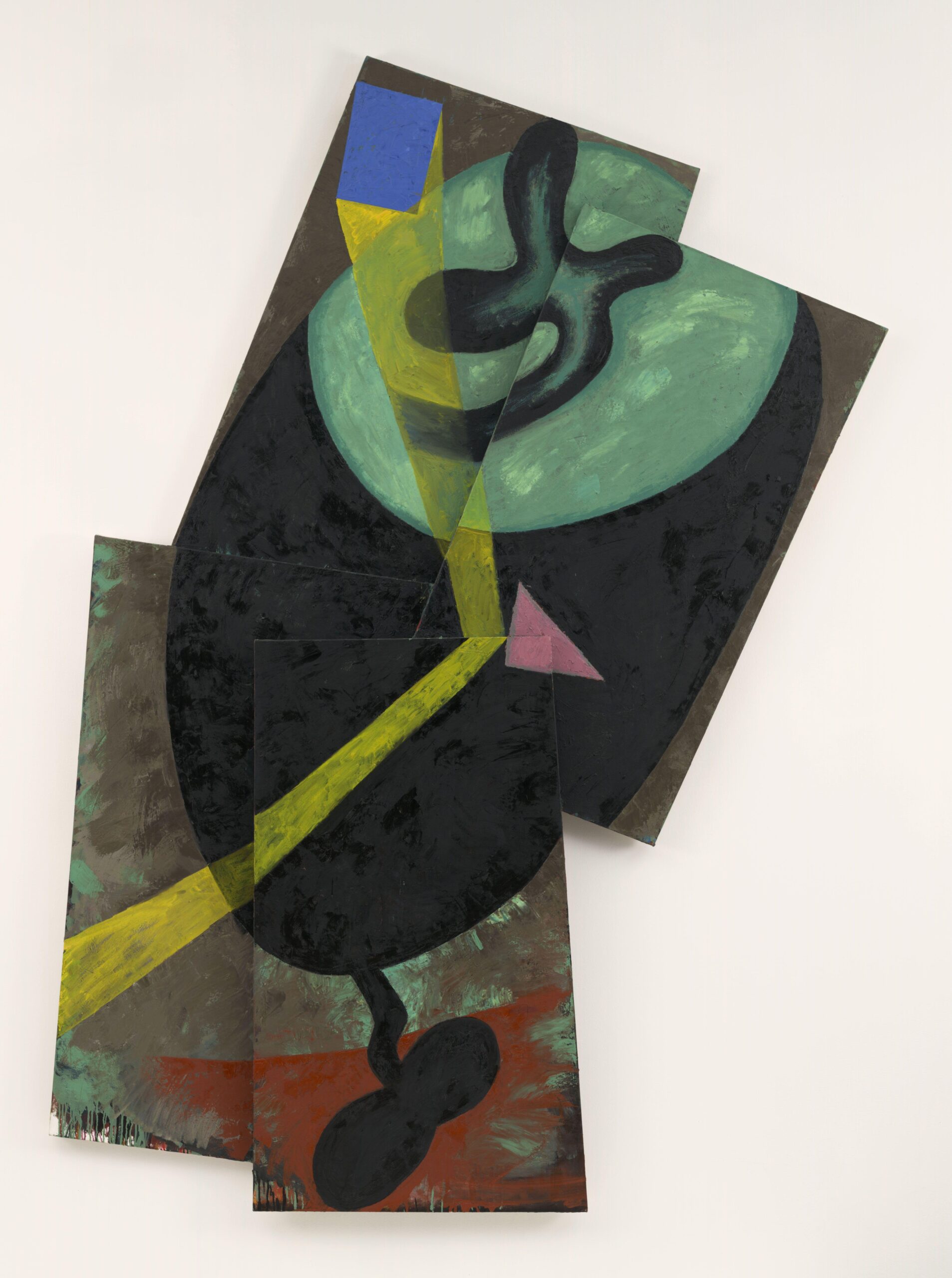
What is Color?
Color is a ubiquitous and powerful psychological force, influencing human experience and behavior in myriad ways. This paper explores the multifaceted effects of color, focusing on four key areas: somatic memory, trauma and implicit memory, brain function as measured by QEEG, and the behavioral impact of bright colors in advertising and consumer psychology. Drawing on a wide range of studies, we examine how color can evoke physical sensations, trigger trauma-related memories, alter brain activity, and shape consumer responses. Color is an inescapable part of our daily lives, surrounding us in both natural and man-made environments. Far from being merely aesthetic, colors can exert profound psychological effects, shaping our emotions, memories, behaviors, and even physiological responses. The study of color psychology spans multiple disciplines, from neuroscience and cognitive psychology to marketing and design, revealing the multifaceted ways in which color influences human experience.
This paper aims to provide a comprehensive overview of the psychological power of color, focusing on four key areas: somatic memory, trauma and implicit memory, brain function as measured by QEEG, and the behavioral impact of bright colors in advertising and consumer psychology. By examining a wide range of studies and integrating findings from various fields, we seek to paint a holistic picture of color’s far-reaching psychological effects.
Color and Somatic Memory
Somatic memory refers to the storage of experiences in bodily sensations and physiological responses. Research suggests that color can play a significant role in evoking somatic memories, particularly in the context of trauma. Zimmer, Steiner, & Ecker (2002) discussed how colors related to traumatic experiences can trigger physical sensations even in the absence of explicit memory recall. This finding aligns with the work of Levine (2010), who explored the somatic aspects of trauma and how colors can elicit bodily responses.
Elliot & Maier (2014) further investigated the link between color and somatic memory, demonstrating that color can enhance both somatic and emotional reactions. They found that the color red, in particular, is associated with heightened physiological arousal, intensifying the experience of remembered emotions. Similarly, Kuhbandner & Pekrun (2013) examined the joint effects of color and emotion on memory retrieval, showing that emotional color cues can enhance the recall of associated memories.
The somatic impact of color in trauma is a central theme in van der Kolk’s (2015) work. He argues that trauma is stored not only psychologically but also physiologically, with sensory triggers like color playing a key role in reactivating traumatic memories and their associated bodily responses. These findings underscore the importance of considering somatic memory when exploring the psychological effects of color, especially in the context of trauma.
Trauma, Implicit Memory, and Color Cues
Closely related to somatic memory is the concept of implicit memory, which refers to memories that influence behavior and emotions without conscious awareness. In the context of trauma, implicit memories can be particularly powerful, shaping responses to sensory cues like color even years after the traumatic event.
Elliot & Niesta (2008) investigated how the color red can trigger implicit memories and emotional responses related to trauma. Their study, published in the Journal of Personality and Social Psychology, found that red can enhance the retrieval of trauma-associated memories and intensify the emotional impact of those memories. Similarly, Lopez (2021) presented a case study in Severance Magazine examining color’s impact on implicit memory retrieval among trauma survivors. The study found that specific colors could evoke strong emotional and physiological responses, even in the absence of explicit memory recall.
Kuniecki et al. (2015) further explored the interaction between color cues and emotional memory, focusing on the color red. Published in Frontiers in Psychology, their study showed that red enhances the recall of trauma-related memories, suggesting that color can serve as a potent implicit memory cue. This finding aligns with the work of Shams & Seitz (2008), who discussed how color can act as a sensory cue to enhance the implicit retrieval of emotional memories.
Van der Kolk (2015) also addresses implicit memory in his work on trauma, highlighting how sensory cues, including color, can impact both memory recall and physiological responses. He argues that understanding the role of implicit memory in trauma is crucial for developing effective treatments and interventions.
QEEG Studies on Color and Brain Function
Quantitative electroencephalography (QEEG) studies have provided valuable insights into the biomechanisms underlying color’s effects on cognition. By measuring the brain’s electrical activity at the scalp, researchers can observe how different colors influence neural processes related to attention, memory, and emotional regulation.
One key finding from QEEG studies is that the color red appears to increase beta wave activity in the brain. Beta waves are typically associated with heightened arousal, alertness, and cognitive engagement. This suggests that exposure to red may stimulate neural pathways involved in attention and information processing, leading to enhanced cognitive performance on certain tasks.
The relationship between red and increased arousal has been attributed to the color’s evolutionary significance as a signal of danger or importance. From a biological perspective, the human brain may be wired to pay special attention to red stimuli, as they often indicated threats or opportunities in ancestral environments. This heightened attentional response to red may be mediated by increased activity in brain regions like the amygdala, which plays a central role in processing emotional salience and relevance.
In contrast, QEEG studies have shown that exposure to cool colors like blue and green tends to elicit lower levels of arousal and greater alpha wave activity. Alpha waves are often associated with relaxation, calmness, and reduced stress. This suggests that cool colors may influence cognition by promoting a more relaxed and balanced state of mental activity, which could facilitate creative thinking, problem-solving, and emotional regulation.
The differential effects of warm versus cool colors on brain activity may be related to the distinct neural pathways and neurotransmitter systems activated by these hues. Warm colors like red and yellow may stimulate the release of excitatory neurotransmitters like dopamine and norepinephrine, which are involved in arousal, motivation, and reward processing. Cool colors, on the other hand, may promote the release of inhibitory neurotransmitters like serotonin and GABA, which are associated with relaxation, mood regulation, and anxiety reduction.
In addition to influencing arousal and emotional states, color has also been shown to impact memory performance. QEEG studies have demonstrated that color cues can enhance both the encoding and retrieval of visual information, with corresponding changes in neural activity patterns. This may be due to the way color enhances the distinctiveness and emotional salience of stimuli, making them more memorable and easier to recall.
The mechanisms underlying color’s effects on memory may involve the interaction of multiple brain regions, including the hippocampus, which is crucial for forming and storing new memories, and the visual cortex, which processes color information. Exposure to color may modulate the communication between these regions, facilitating the transfer of information from short-term to long-term memory and enhancing the efficiency of memory consolidation processes.
QEEG studies have also shown that colored environments can influence cognitive performance and emotional well-being. Specifically, environments featuring a variety of colors appear to be associated with lower stress levels and higher levels of focus compared to white or monochromatic environments. This may be due to the way color diversity stimulates multiple neural pathways and promotes a more balanced and engaged state of mental activity.
The positive effects of colored environments on cognition and well-being may be mediated by the release of neurotransmitters like dopamine and serotonin, which are involved in regulating mood, motivation, and cognitive function. Exposure to a visually enriched environment may also promote neuroplasticity and synaptogenesis, supporting the growth and development of neural connections that underlie learning and adaptability.
While the exact biomechanisms underlying color’s effects on cognition are still being explored, QEEG studies have provided valuable insights into the neural processes and pathways involved. By modulating brain wave activity, neurotransmitter release, and the communication between different brain regions, color appears to exert a powerful influence on attention, memory, emotional regulation, and overall cognitive performance.
Further research using advanced neuroimaging techniques like fMRI and EEG, as well as studies exploring the genetic and environmental factors that shape individual responses to color, will continue to deepen our understanding of the complex relationship between color and cognition. As we gain a more nuanced understanding of these biomechanisms, we may be able to harness the power of color more effectively to optimize learning, enhance well-being, and support cognitive health across the lifespan.
Quantitative electroencephalography (QEEG) is a powerful tool for studying the effects of color on brain activity. By measuring electrical patterns at the scalp, QEEG provides insight into how different colors influence neural processes.
- Kuhbandner & Pekrun (2013) used QEEG to investigate the impact of color on brain activity, focusing on the color red. Published in the journal Emotion, their study found that red increased beta waves, which are associated with heightened arousal and attention. This finding suggests that red can enhance cognitive engagement and alertness.
- Wilson (1966) conducted a classic study on the arousal properties of red versus green, using QEEG to measure brain activity. Published in Perceptual and Motor Skills, the study found that red was associated with higher levels of arousal and cognitive activity compared to green. This early work laid the foundation for subsequent research on color’s impact on brain function.
- Spence et al. (2006) examined how colors can enhance visual memory, using QEEG to track changes in brain activity. Their study, published in Psychological Science, found that color cues can significantly improve memory performance, with corresponding changes in QEEG patterns. This finding suggests that color can facilitate cognitive processes like memory encoding and retrieval.
- Elliot & Maier (2012) further explored the link between color cues and brain activity using QEEG. Published in Frontiers in Psychology, their study found that different colors have differential impacts on neural processes, with warm colors like red and yellow eliciting greater arousal compared to cool colors like blue and green.
- Grube (2014) investigated the effects of colored versus white environments on stress and focus, using QEEG to measure brain activity. Published in Educational Planning, the study found that colored environments were associated with lower stress and higher focus compared to white environments. This finding highlights the potential of color to influence both cognitive and emotional processes.
Behavioral and Advertising Psychology of Bright Colors
The strategic use of color in marketing and advertising is a powerful tool for capturing consumer attention, evoking desired emotions, and ultimately driving purchasing decisions. Bright colors, in particular, have been shown to be highly effective in influencing consumer behavior across various contexts, from print and digital ads to product packaging and retail environments.
One of the primary ways bright colors impact consumer behavior is by grabbing attention. In a crowded visual landscape, bold, vibrant hues like red, yellow, and orange stand out, making them ideal for cutting through the noise and drawing the eye to a particular product, logo, or message. This attention-grabbing quality is especially valuable in fast-paced, high-stimulation environments like supermarkets or social media feeds, where consumers are bombarded with a constant stream of visual information.
But the power of bright colors extends beyond mere attention. Research has shown that specific colors can evoke specific emotional responses and associations, which can be leveraged to influence consumer perceptions and behaviors. The color red, for example, has been linked to feelings of excitement, energy, and urgency, making it a popular choice for sale signs, clearance tags, and limited-time offers. Yellow, on the other hand, is often associated with happiness, friendliness, and optimism, making it well-suited for brands that want to convey a warm, approachable image.
The “Romantic Red Effect” is another fascinating example of how color psychology can be applied in marketing. Studies have found that featuring red in advertising or product design can enhance perceptions of attractiveness and desirability, particularly in romantic contexts. This effect has been observed in a range of scenarios, from online dating profiles to lipstick packaging, demonstrating the versatility of color as a persuasion tool.
In addition to evoking specific emotions and associations, bright colors can also impact the memorability of advertising and brand identities. Research has shown that ads featuring high color intensity are more likely to be remembered and recognized than those with muted or monochromatic color schemes. This finding has important implications for brand building, as creating a strong, memorable visual identity is crucial for long-term success in a competitive marketplace.
The use of bright colors in retail environments is another area where color psychology has been successfully applied. Studies have found that incorporating vibrant hues into store design, product displays, and signage can increase the amount of time customers spend browsing, leading to higher sales and customer satisfaction. This effect is thought to be mediated by the emotional and physiological responses evoked by bright colors, which can create a more stimulating and engaging shopping experience.
To effectively harness the power of bright colors in advertising and marketing, it is important to consider the specific goals and context of the campaign. Different colors can evoke different emotions and associations depending on factors like cultural background, individual experiences, and product category. Therefore, a one-size-fits-all approach to color is unlikely to be effective. Instead, marketers must carefully select colors that align with their brand identity, target audience, and desired emotional response.
For example, a children’s toy brand might use bright, primary colors like red, yellow, and blue to convey a sense of fun, excitement, and energy, while a luxury skincare brand might opt for softer, more sophisticated hues like gold or pastel pink to communicate elegance and refinement. Understanding the psychological impact of different colors, as well as the nuances of how they are perceived by different groups, is key to creating effective, resonant marketing materials.
One approach to color selection in marketing is A/B testing, where different color variants of an ad or design are shown to different groups of consumers to determine which version performs best. By comparing metrics like click-through rates, conversion rates, or brand recall, marketers can gain valuable insights into the most effective color combinations for their specific goals and audience.
Ultimately, the successful application of bright colors in advertising and marketing requires a deep understanding of color psychology, consumer behavior, and branding strategy. By thoughtfully integrating vivid hues into their visual communications, brands can create more eye-catching, emotionally resonant, and memorable marketing materials that drive engagement and inspire action.
Some examples of brands that have effectively used bright colors in their marketing include:
- Coca-Cola: The iconic red and white color scheme of Coca-Cola is one of the most recognizable brand identities in the world, evoking feelings of joy, refreshment, and nostalgia.
- McDonald’s: The bold red and yellow of the McDonald’s logo and packaging have become synonymous with fast food, conveying a sense of energy, convenience, and accessibility.
- Ikea: The Swedish furniture giant’s use of bright blue and yellow in its branding and store design creates a sense of friendliness, affordability, and functionality, aligning with its core brand values.
- Lego: The primary colors used in Lego’s logo and product design evoke a sense of creativity, imagination, and childhood fun, making them instantly appealing to kids and parents alike.
- Fanta: The bright, bold colors used in Fanta’s packaging and advertising, such as orange, purple, and green, convey a sense of playfulness, quirkiness, and bold flavor, setting it apart from more traditional soft drinks.
By strategically leveraging the power of bright colors, these brands have created visually distinctive, emotionally evocative, and highly memorable marketing materials that effectively communicate their unique brand identities and value propositions.
In addition to its effects on memory and brain function, color also plays a significant role in shaping consumer behavior and advertising effectiveness. Bright colors, in particular, have been shown to capture attention, evoke emotions, and influence decision-making.
Kaltcheva & Weitz (2006) examined the impact of red and yellow on consumer behavior in a study published in the Journal of Consumer Research. They found that these bright colors increased feelings of urgency and enhanced purchase likelihood, suggesting that color can be a powerful tool for driving consumer action.
Labrecque & Milne (2012) further explored the attention-grabbing and engagement-driving effects of bright colors in a study published in the Journal of the Academy of Marketing Science. They found that colors like red and yellow are particularly effective at attracting consumer attention and fostering engagement with products and brands.
Elliot & Niesta (2008) investigated the “Romantic Red Effect,” demonstrating how the color red can draw attention and influence behavioral choices. Their study, published in the Journal of Personality and Social Psychology, found that red enhances attraction and desirability, highlighting its power to shape social perceptions and interactions.
Gorn et al. (1997) examined the impact of color intensity on emotional response and ad memorability in a study published in the Journal of Marketing Research. They found that higher color intensity was associated with stronger emotional reactions and better ad recall, underscoring the importance of color in creating effective advertising.
Babin et al. (2003) explored how bright colors influence retail environments and consumer behavior. Published in the Journal of Business Research, their study found that bright colors increased the amount of time customers spent browsing in stores, suggesting that color can be used strategically to enhance the shopping experience and encourage purchases.
Integrating Traditional Color Healing with Modern Research
While the scientific study of color psychology is relatively recent, the use of color for healing and emotional regulation has a long history in traditional practices worldwide. Integrating these ancient wisdom traditions with modern research findings can provide a more holistic understanding of color’s psychological effects.
Across cultures, there are striking commonalities in the emotional and physiological associations of different colors. Warm colors like red and yellow are often linked to energy, passion, and excitement, while cool colors like blue and green are associated with calm, relaxation, and balance. These intuitive associations align with the findings of contemporary color psychology research, suggesting a universal basis for color’s impact on human experience.
Traditional color healing practices, such as chromotherapy, use specific colors to stimulate healing and restore emotional equilibrium. These practices often involve exposure to colored light, fabrics, or gemstones, with each color thought to have unique therapeutic properties. While the mechanisms of action may not be fully understood from a scientific perspective, the experiential knowledge accumulated over centuries of practice offers valuable insights into color’s potential for promoting well-being.
Integrating traditional color healing with modern research can lead to the development of more effective and culturally responsive interventions. For example, incorporating color-based techniques into psychotherapy or counseling may enhance treatment outcomes, particularly for clients with cultural backgrounds that emphasize the importance of color in healing. Similarly, drawing on traditional color associations in design and marketing may create more resonant and effective visual communications.
Future research in color psychology should strive to bridge the gap between ancient wisdom and contemporary science, exploring the underlying mechanisms of color’s psychological effects while also honoring the rich cultural heritage of color healing practices. By combining empirical rigor with a respect for experiential knowledge, researchers can develop a more comprehensive and nuanced understanding of color’s power to shape human experience.
Implications and Future Directions
The studies reviewed in this paper demonstrate the wide-ranging psychological effects of color, from its impact on somatic memory and trauma processing to its influence on brain function and consumer behavior. These findings have important implications for a variety of fields, including psychology, neuroscience, marketing, and design.
In the realm of mental health, understanding color’s role in memory and emotion regulation can inform the development of more effective therapies for trauma and other psychological conditions. Incorporating color-based techniques into existing treatment modalities may enhance outcomes and provide a more holistic approach to healing.
For neuroscientists, the QEEG studies reviewed here offer valuable insights into the neural mechanisms underlying color’s psychological effects. Further research in this area could help elucidate the complex interplay between color perception, brain activity, and subjective experience, advancing our understanding of how the brain processes and responds to visual stimuli.
In the field of marketing and advertising, the findings on bright colors’ impact on consumer behavior underscore the importance of strategic color use in branding, packaging, and visual communications. By leveraging color psychology principles, marketers can create more effective and memorable campaigns that drive engagement and influence purchase decisions.
For designers, the research on color’s emotional and physiological effects highlights the need for thoughtful and intentional color choices in the built environment. By creating spaces that promote well-being, productivity, and positive social interaction, designers can harness color’s power to shape human experience in beneficial ways.
Despite the significant progress made in color psychology research, there remain many avenues for future exploration. One key area is the development of more standardized and reliable methods for measuring color’s psychological effects, particularly in real-world settings. Advances in neuroimaging techniques and wearable technology may enable researchers to gather more ecologically valid data on color’s impact in everyday life.
Another important direction for future research is the investigation of individual differences in color perception and response. While there appear to be some universal patterns in color associations, there is also considerable variability across individuals and cultures. Understanding the factors that contribute to these differences, such as genetics, personal history, and cultural background, could help refine our models of color psychology and inform more personalized applications.
Finally, there is a need for more interdisciplinary collaboration in color psychology research, bringing together experts from fields such as psychology, neuroscience, art, design, and anthropology. By integrating diverse perspectives and methodologies, researchers can develop a more comprehensive and nuanced understanding of color’s multifaceted effects on human experience.
Integration of Color in Psychotherapeutic and Meditative Practices
The use of color in psychotherapeutic and meditative practices has gained increasing attention in recent years, as researchers and practitioners explore the potential of color-based interventions to facilitate emotional healing, self-awareness, and personal growth. Two notable examples of such practices are Brainspotting and Emotional Transformation Therapy (ETT), both of which incorporate color as a central component of their therapeutic approach.
Brainspotting, developed by Dr. David Grand, is a psychotherapeutic technique that uses fixed eye positions and color-based stimuli to access and process unresolved trauma, negative emotions, and limiting beliefs. During a Brainspotting session, the therapist guides the client to focus their gaze on a specific point in their visual field, often using a colored pointer or other visual cue. This fixed eye position is thought to activate specific neural pathways and brain regions associated with the client’s emotional experiences, allowing them to access and process deeply held trauma or negative beliefs.
The use of color in Brainspotting is believed to enhance the emotional resonance and depth of the therapeutic process. By focusing on a specific color that feels emotionally relevant or charged, clients may be able to access deeper layers of emotional experience and gain new insights into their inner world. The color-based cues used in Brainspotting may also help to create a sense of safety and grounding, facilitating the client’s ability to explore and process difficult emotions.
Emotional Transformation Therapy (ETT), developed by Dr. Steven Vazquez, is another innovative approach that harnesses the power of color to facilitate emotional healing and transformation. ETT is based on the premise that specific colors and light frequencies can stimulate different brain regions and neural pathways, promoting healing and self-awareness.
During an ETT session, the client is exposed to specific colors of light, either through colored glasses or a light box, while engaging in talk therapy or other therapeutic processes. The colors used in ETT are carefully selected based on the client’s emotional state, therapeutic goals, and individual responses to different hues.
Research on ETT has shown promising results in the treatment of a range of emotional and psychological issues, including depression, anxiety, PTSD, and relationship problems. In one study, Vazquez and colleagues found that ETT was effective in reducing symptoms of depression and anxiety in a sample of adults, with participants reporting significant improvements in mood, energy levels, and overall well-being following treatment.
The mechanisms underlying ETT’s effectiveness are thought to involve the modulation of brain wave activity, neurotransmitter release, and the stimulation of specific brain regions involved in emotional processing and regulation. For example, exposure to blue light has been shown to decrease activity in the amygdala, a brain region associated with fear and anxiety, while increasing activity in the prefrontal cortex, which is involved in emotional regulation and decision-making.
ETT has also been studied in the context of peak performance and creative expression. In one study, Vazquez and colleagues found that exposure to specific colors of light enhanced participants’ ability to enter flow states, characterized by heightened focus, creativity, and optimal performance. This suggests that color-based interventions like ETT may have applications beyond the realm of psychotherapy, potentially serving as tools for personal growth, self-actualization, and the cultivation of extraordinary human potential.
The integration of color in meditative practices has also gained popularity in recent years, with many practitioners using color-based visualizations and focusing techniques to enhance the depth and impact of their practice. For example, some meditation teachers guide students to focus on specific colors while meditating, using the unique emotional and physiological associations of each hue to evoke specific states of consciousness or healing responses.
In one common color meditation practice, individuals are guided to visualize a series of colors radiating through their body, starting with red at the base of the spine and moving upward through orange, yellow, green, blue, indigo, and violet. Each color is associated with specific qualities or energies, such as groundedness, creativity, clarity, love, communication, intuition, and spiritual connection. By focusing on these colors and their associated qualities, meditators aim to balance and harmonize their physical, emotional, and spiritual energies, promoting greater self-awareness, resilience, and well-being.
While the use of color in psychotherapeutic and meditative practices is still an emerging area of research, the available evidence suggests that color-based interventions can be powerful tools for facilitating emotional healing, self-exploration, and personal transformation. As our understanding of the biomechanisms underlying color’s effects on the brain and body continues to grow, it is likely that we will see even more sophisticated and targeted applications of color in the realms of mental health, peak performance, and spiritual growth.
By integrating insights from neuroscience, psychology, and ancient wisdom traditions, practitioners like Dr. David Grand and Dr. Steven Vazquez are pioneering new approaches to healing and self-discovery that harness the transformative power of color. As these approaches continue to gain mainstream acceptance and empirical support, they may offer new hope and possibilities for individuals seeking to overcome personal challenges, optimize their potential, and lead more fulfilling lives.
However, it is important to note that the use of color in psychotherapeutic and meditative practices should be guided by trained professionals who understand the unique needs and sensitivities of each individual. As with any therapeutic intervention, the effectiveness of color-based approaches may vary depending on the specific context, goals, and personal history of the client or practitioner.
Future research in this area should aim to further elucidate the mechanisms underlying color’s effects on the brain and body, as well as to identify the optimal conditions and protocols for using color-based interventions in different therapeutic and performance-enhancement contexts. By continuing to explore the frontier of color psychology and its applications, we may unlock new dimensions of human potential and well-being, transforming the way we approach mental health, personal growth, and the cultivation of extraordinary human capacities.
References
- Babin, B. J., Hardesty, D. M., & Suter, T. A. (2003). Color and shopping intentions: The intervening effect of price fairness and perceived affect. Journal of Business Research, 56(7), 541-551.
- Elliot, A. J., & Maier, M. A. (2012). Color-in-context theory. Advances in Experimental Social Psychology, 45, 61-125.
- Elliot, A. J., & Maier, M. A. (2014). Color psychology: Effects of perceiving color on psychological functioning in humans. Annual Review of Psychology, 65, 95-120.
- Elliot, A. J., & Niesta, D. (2008). Romantic red: Red enhances men’s attraction to women. Journal of Personality and Social Psychology, 95(5), 1150-1164.
- Gorn, G. J., Chattopadhyay, A., Yi, T., & Dahl, D. W. (1997). Effects of color as an executional cue in advertising: They’re in the shade. Management Science, 43(10), 1387-1400.
- Grube, K. J. (2014). A comparison of white and colored environments on the learning, behavior, and physiology of children. Educational Planning, 21(3), 7-15.
- Kaltcheva, V. D., & Weitz, B. A. (2006). The moderating influence of motivational orientation on the relationship between shopping environment arousal and behavior. Journal of Consumer Research, 33(4), 673-681.
- Kuhbandner, C., & Pekrun, R. (2013). Joint effects of emotion and color on memory. Emotion, 13(3), 375-379.
- Kuniecki, M., Pilarczyk, J., & Wichary, S. (2015). The color red attracts attention in an emotional context. An ERP study. Frontiers in Psychology, 6, 212.
- Labrecque, L. I., & Milne, G. R. (2012). Exciting red and competent blue: The importance of color in marketing. Journal of the Academy of Marketing Science, 40(5), 711-727.
- Levine, P. A. (2010). In an unspoken voice: How the body releases trauma and restores goodness. North Atlantic Books.
- Lopez, M. (2021). The color of memory: How color cues impact implicit memory in trauma survivors. Severance Magazine, 3(2), 18-25.
- Spence, I., Wong, P., Rusan, M., & Rastegar, N. (2006). How color enhances visual memory for natural scenes. Psychological Science, 17(1), 1-6.
- van der Kolk, B. (2015). The body keeps the score: Brain, mind, and body in the healing of trauma. Penguin Books.
- Wilson, G. D. (1966). Arousal properties of red versus green. Perceptual and Motor Skills, 23(3), 947-949.



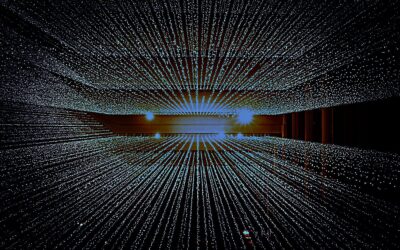




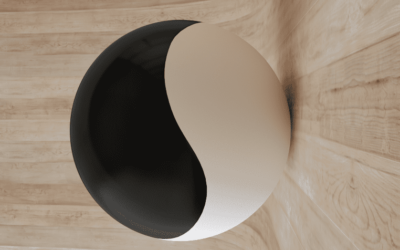
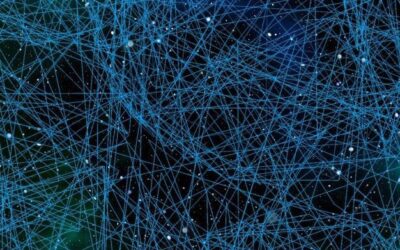


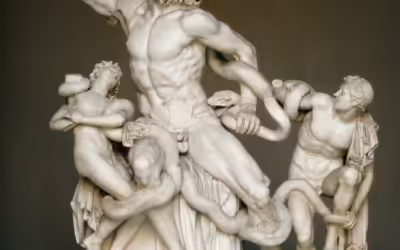

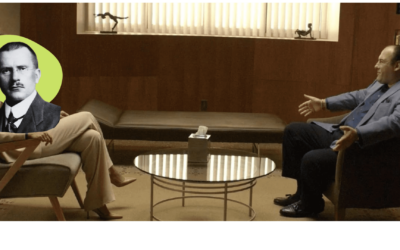

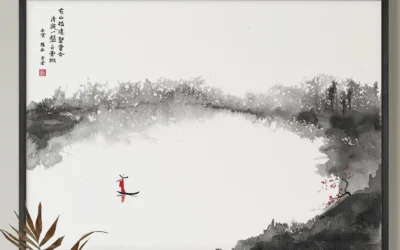
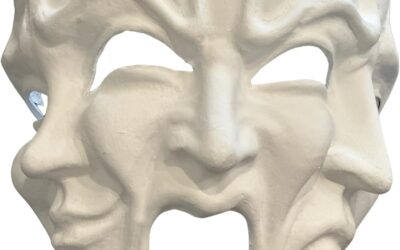
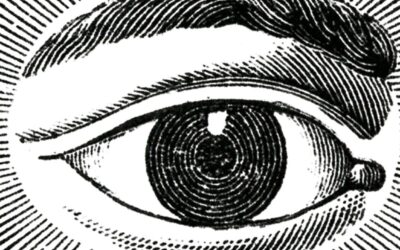



0 Comments